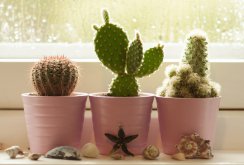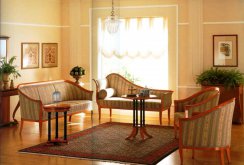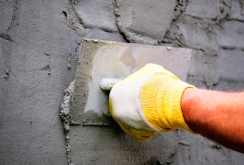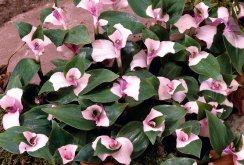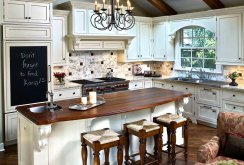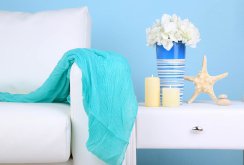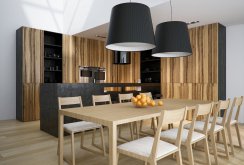Roofing materials: types and characteristics
How to understand the variety of roofing materials for the roof and choose the right one? Find out about this from our review on the types and characteristics of roofing materials.Types of material composition
For the manufacture of roofing materials, three types of compositions are used:- Organic - bitumen and polymer. Service life averages 25 years. The bitumen-based roof supports combustion and quickly ages under the influence of ultraviolet radiation. Polymer varieties serve up to 70 years.
- Minerals include clay or slate. Over time, under the influence of natural conditions begin to crack and collapse. Do not rot and do not sustain combustion.
- The metal roof is the most durable. For its production, cold-rolled galvanized steel and other metals are used.
Views on the shape and size of an individual element
According to this classification, all roofing materials are conditionally divided into the following varieties:- soft
- bulk;
- leafy;
- piece.
Soft roof
This group is distinguished by its flexibility. Due to it, materials are excellent for a roof of any configuration. Their common advantages:- good noise and heat insulation;
- water tightness;
- resistance to rust and mold;
- light weight;
- simple installation;
- incombustibility;
- mechanical strength;
- low amount of waste.
- shingles;
- flat membrane roofing;
- guided roll roofing.
Bulk roof
Self-leveling roof is a thick liquid that is poured onto the surface. Usually they are used on flat roofs. Self-leveling roofs differ in the number of different layers during the coating process:- reinforced are poured onto a reinforcing mesh or a special fiberglass;
- unreinforced are applied in a continuous layer directly to the roof;
- combined consists of three layers - rolled material, bulk mastic and the upper protective layer of crushed stone or gravel.
Sheet roofing
The sheets are made of metal, ondulin, slate, corrugated board and seam roof.- Wavy or flat slate is made of asbestos and cement. Service life not less than 25 years. Slate is easy to process and non-combustible. Its biggest drawback is fragility, which is made up for by a low price.
- Ondulin consists of cellulose impregnated with bitumen, and is coated with paint on top. It is extremely convenient for self-assembly - it is lightweight, flexible, and easy to cut. The material is waterproof, eco-friendly and noiseless. Its disadvantage is flammability and inconvenience of work in the heat.
- The metal tile consists of a sheet of steel and several protective layers - galvanizing, polymers, paint and stone dusting. The roof, covered with metal, looks stylish, reliable, does not deform, and is resistant to weathering and sunlight.
- Compared to metal tiles, corrugated board has a large sheet thickness and a peculiar profile - most often rectangular.
- The seam roof is stamped from galvanized steel. Its sheets are fastened together by folds - special locks. This type of roof is durable, but needs to be insulated. May build up static electricity.
Piece roof
By piece include all types of tiles. The roof of the tiles is the most attractive, but also the most expensive. It is of the following types:- ceramic;
- metal;
- cement or polymer sand.
- wooden;
- glass;
- shale.
- wide range of shapes and colors;
- noble appearance;
- resistance to fungus and rust;
- noiselessness, durability;
- environmental friendliness;
- ease of repair - you can replace one element at a time without dismantling the entire roof.

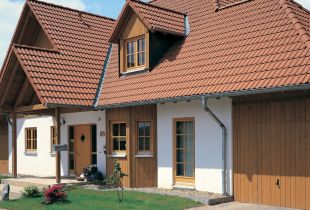 The hip roof in modern construction: design features (21 photos)
The hip roof in modern construction: design features (21 photos) Fronton of the house: facing with modern materials (21 photos)
Fronton of the house: facing with modern materials (21 photos)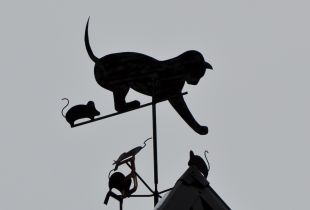 Weather vane on the roof: functional qualities and symbolism (22 photos)
Weather vane on the roof: functional qualities and symbolism (22 photos)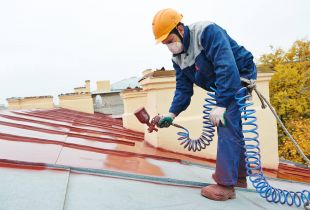 How to paint the roof of the house: the choice of paint, stages of work
How to paint the roof of the house: the choice of paint, stages of work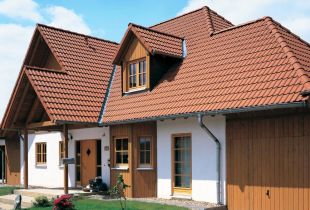 Roof of a private house: design features (50 photos)
Roof of a private house: design features (50 photos)
